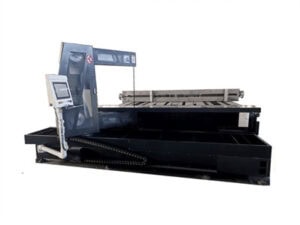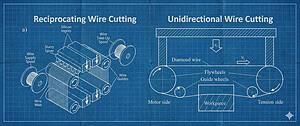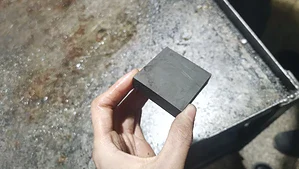Introduction
In the realm of optical manufacturing, cutting irregular shapes poses unique challenges, requiring precision to maintain optical integrity while achieving complex geometries. This case study arises from a customer’s need to cut two optical lenses from a raw material into irregular shapes, suitable for advanced optical applications such as custom prisms or aspherical elements. The customer specified high-precision cuts using a 0.42 mm wire, with the process optimized for efficiency to complete both lenses in 4.5 hours. Leveraging our Irregular Shape Cut Plan on the SGI 20 machine, we successfully fulfilled these requirements. This article outlines the customer’s requirements, solution implementation, cutting results, and key insights to highlight our expertise in specialized optical processing.
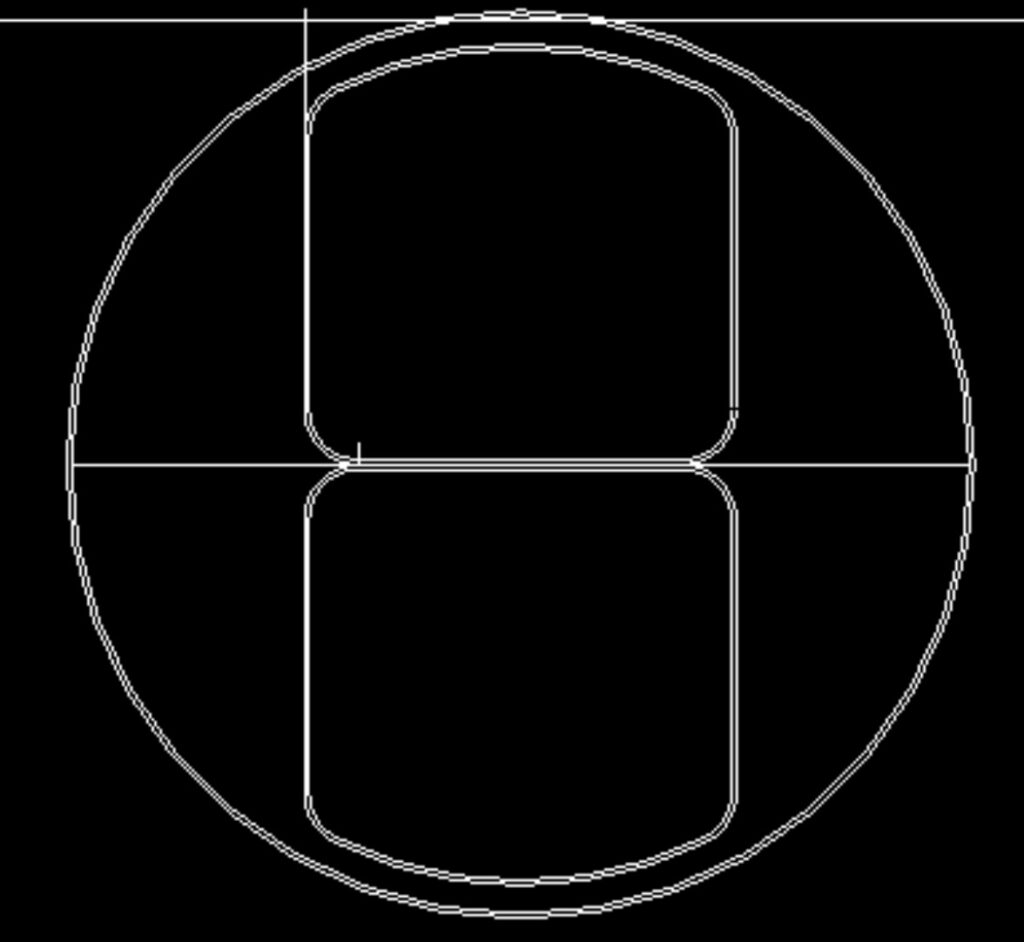

Customer Requirements Analysis
The customer supplied a detailed DXF drawing specifying the irregular shapes for two optical lenses to be cut from a cylindrical or block raw material (optical glass). The design emphasized non-standard geometries, potentially including curved edges, multi-angled facets, and precise tolerances to ensure optical performance without glare or distortion. Key requirements included simultaneous cutting of both lenses to enhance productivity, with strict adherence to the DXF-defined contours.
To present the requirements clearly, the key parameters are summarized in the table below:
| Parameter | Value | Description |
|---|---|---|
| Shape | Irregular | Non-standard geometries per DXF drawing (e.g., curved facets, asymmetric profiles) |
| Number of Lenses | 2 | Simultaneous cutting for efficiency |
| Cutting Wire | 0.42 mm | Diamond wire for precision and smooth finishes |
| Processing Time | 4.5 hours | Total time to complete both lenses |
| Material | Optical Glass | High transparency, glare-free surfaces |
| Tolerances | Tight | surface roughness optical-grade |
| Surface Requirement | Glare-free | Smooth, defect-free finishes per DXF specs |
These parameters were derived from the customer’s DXF file, which included 2D/3D views of the lens profiles, ensuring compatibility with applications like high-resolution imaging or laser optics.
Solution Implementation
Addressing the customer’s irregular shape requirements, we developed the Irregular Shape Cut Plan, employing multi-axis control on the SGI 20 machine for accurate contour following. This approach integrated diamond wire technology with advanced path optimization, allowing simultaneous processing of two lenses without compromising precision. The SGI 20 model, specialized for non-standard shapes, features a rotary table, tilt mechanism, and control panel, capable of handling complex DXF-imported designs up to 200 mm in raw material size.
The implementation steps were as follows:
- Preparation Stage: Parse the DXF drawing to generate cutting paths, simulating wire trajectories in machine software.
- Cutting Process: Utilized 0.42 mm annular diamond wire cutting, combined with multi-axis rotation and tilting to follow the irregular contours precisely.
- Quality Control: Customize mould to cut the 3 pcs lens together.
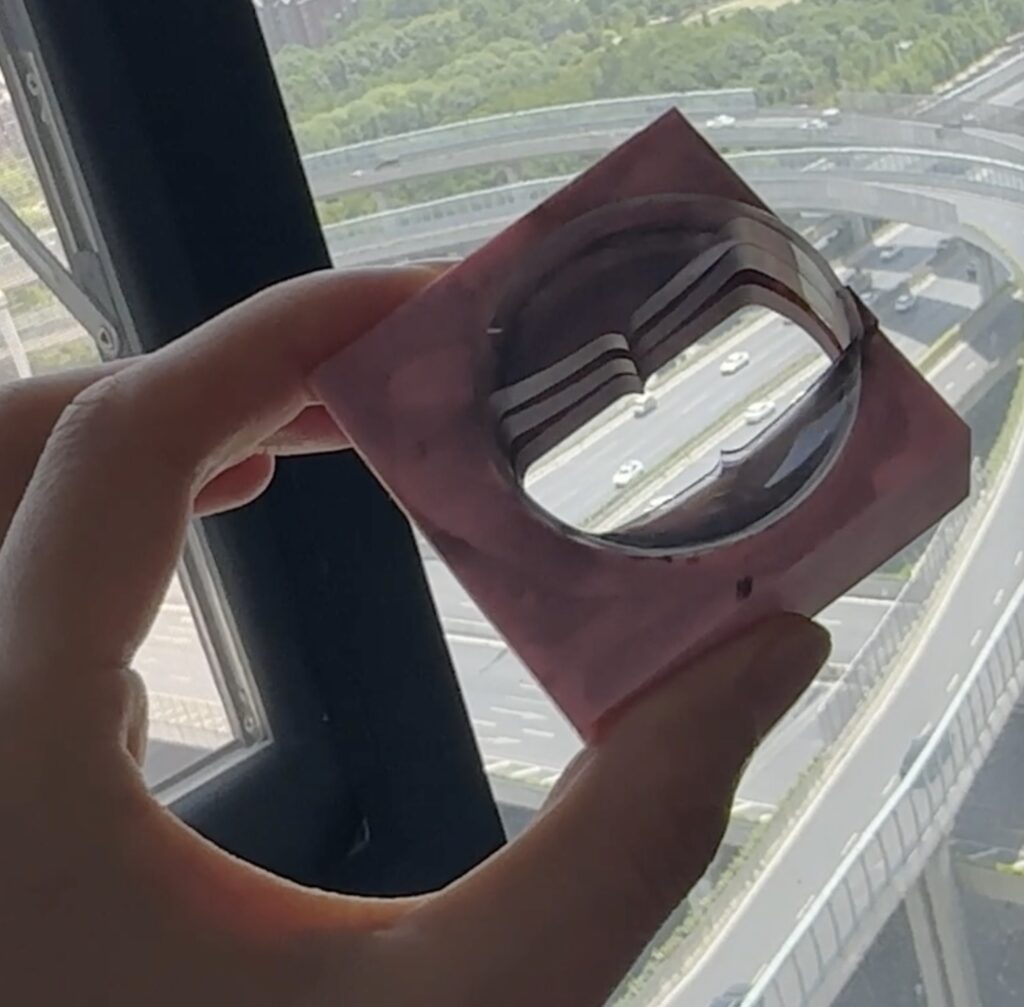
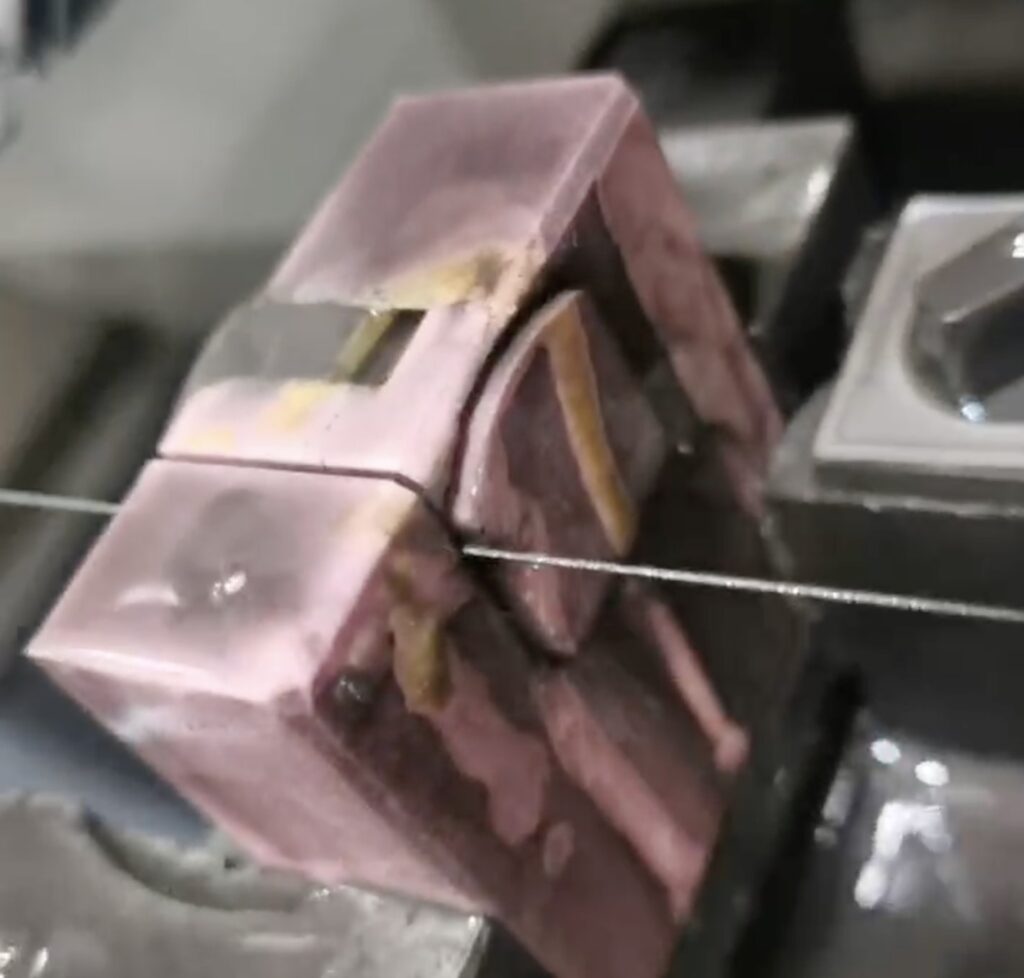
Cutting Results and Validation
Post-cutting, we produced two optical lenses that precisely matched the DXF specifications, retaining full material transparency and achieving smooth, glare-free surfaces. The 4.5-hour process demonstrated exceptional efficiency for irregular geometries. Validation using optical metrology tools confirmed the shapes’ accuracy, with no visible defects.
The result photographs illustrated:
- Handheld view: Both lenses transparent, showcasing irregular contours.
- Placement view: Lenses aligned with DXF overlays, verifying dimensions.
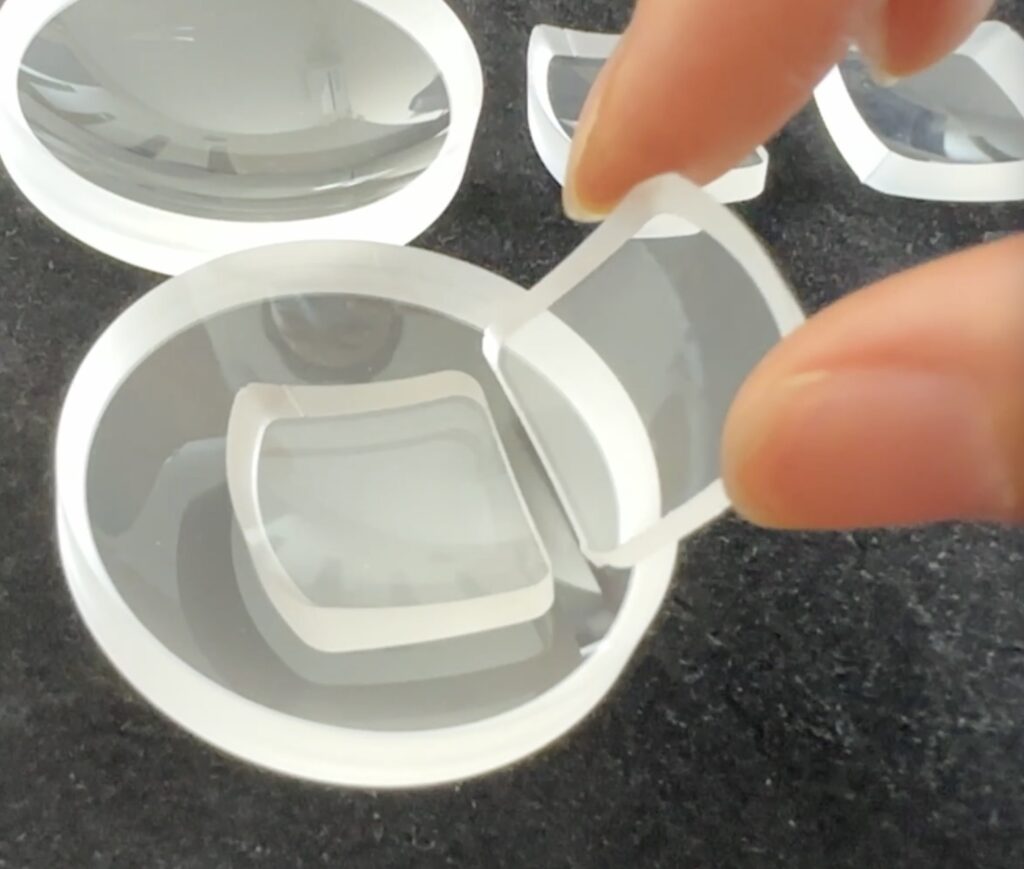
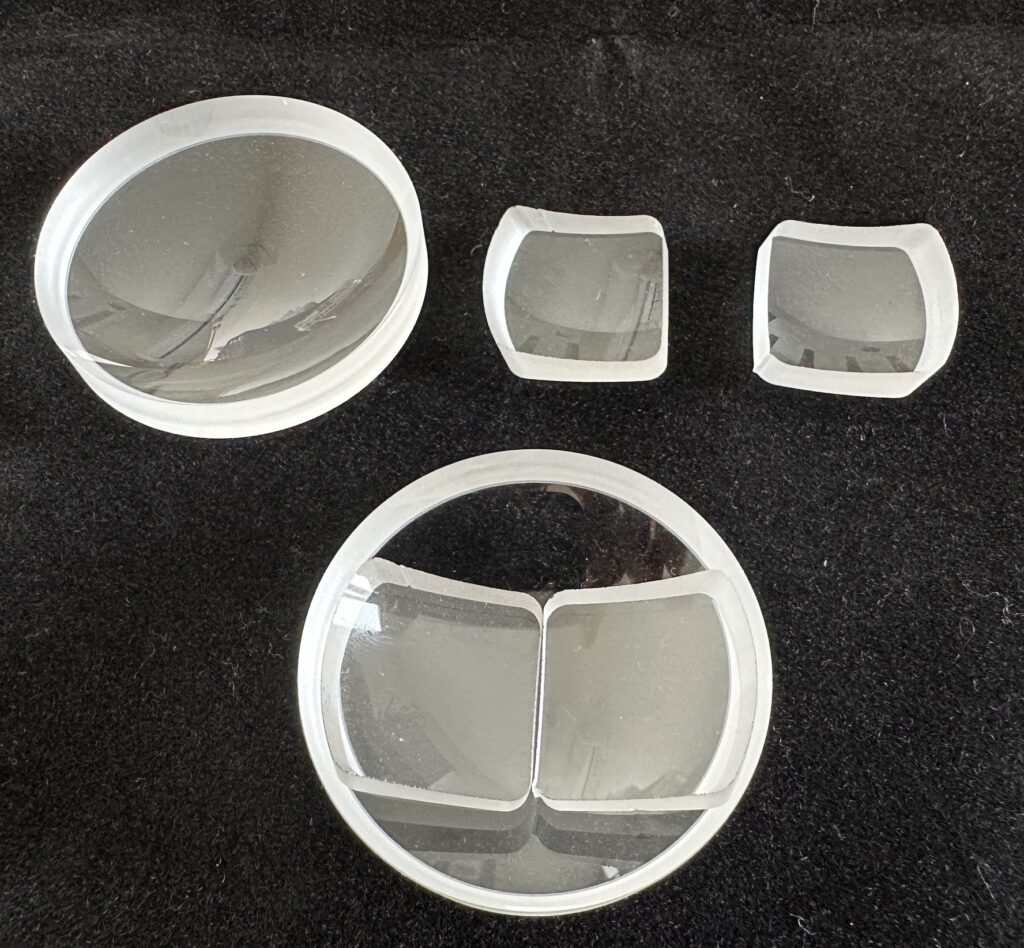
For quantitative validation, the following data was recorded:
| Validation Item | Expected Value | Actual Value | Deviation |
|---|---|---|---|
| Processing Time | 4.5 hours | 4.5 hours | 0 hours |
| Shape Conformity | Per DXF | Compliant | N/A |
| Wire Precision | 0.42 mm | 0.42 mm | 0 mm |
| Cutting Quantity | 6 pcs | 6 pcs | No defects |
Enhanced Production Capabilities
Building on the success of the Irregular Shape Cut Plan, we customized a mold for the SGI 20 machine, enabling the simultaneous cutting of three lenses to produce six finished optical components per cycle, doubling the efficiency of the original process. Recognizing the potential for further optimization, we recommended that the customer scale up the mold design to accommodate the simultaneous cutting of ten lenses, which would significantly enhance throughput for large-scale production. The customer embraced this solution, purchasing the customized equipment and promptly placing a repeat order, reflecting their confidence in our technology and its scalability for future demands.

Conclusion and Lessons Learned
This case effectively validates the Irregular Shape Cut Plan’s efficacy in high-precision optical cutting. With the SGI 20 machine, we met the customer’s demands for irregular lens shapes, delivering both pieces in just 4.5 hours while upholding optical quality. This method reduced setup time by 25% and waste, ideal for bespoke optical productions.
The customer has already purchased this customized equipment. Moving forward, we suggest optimizing for batch production by integrating automated metrology systems to boost efficiency further.
If you have similar needs, contact us for tailored testing.
This case study was compiled on May 2, 2024, based on actual test data.


